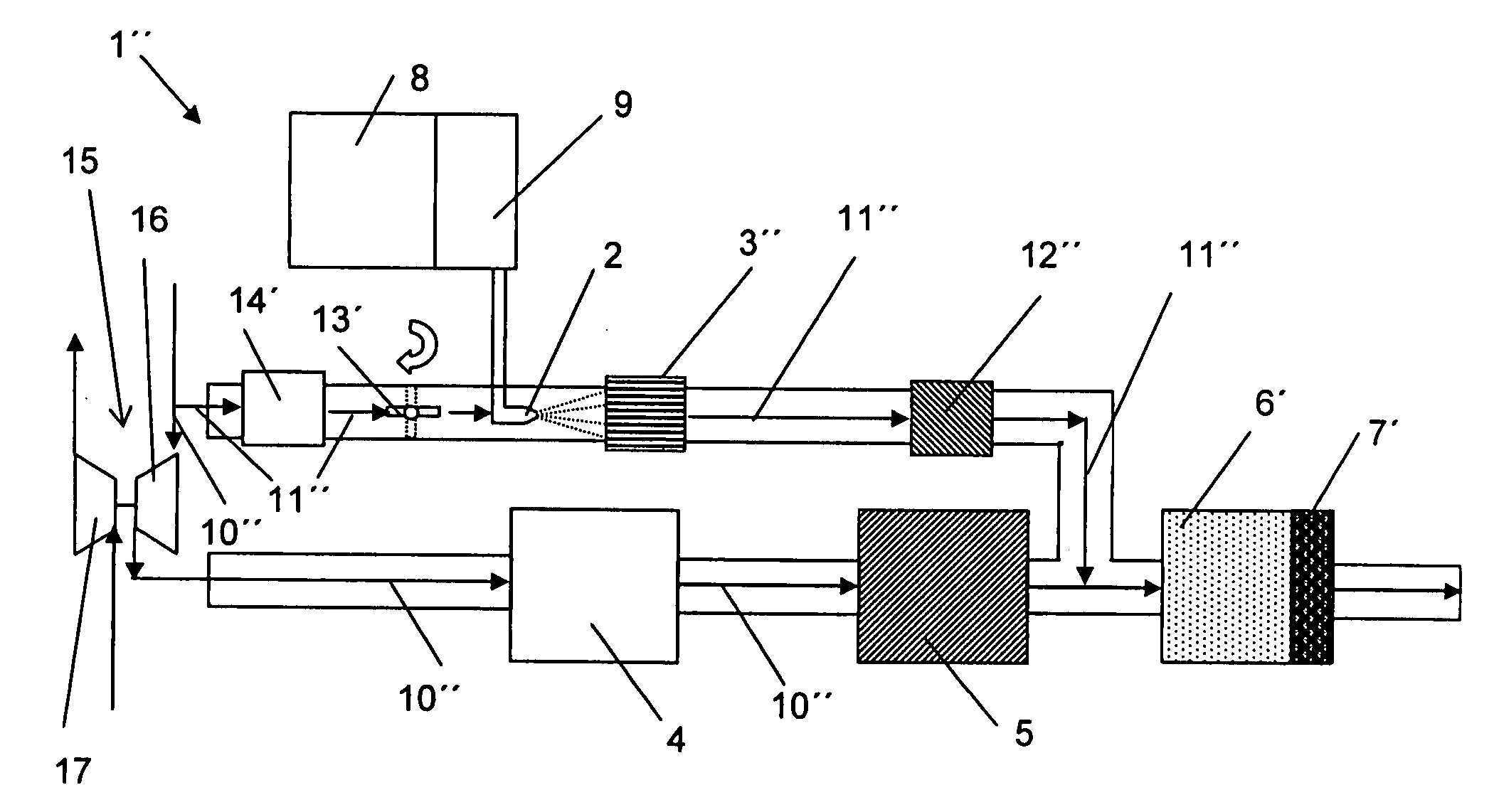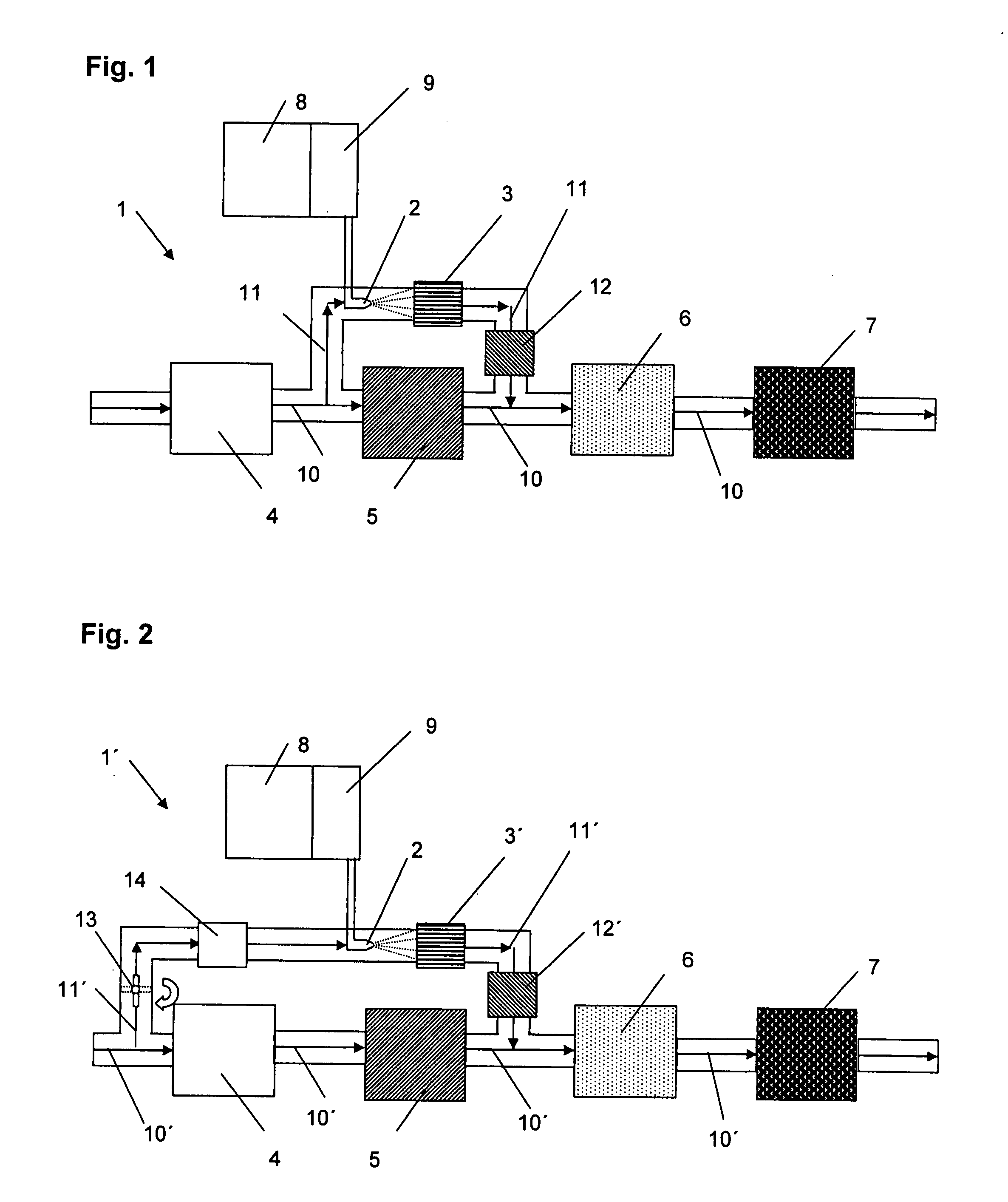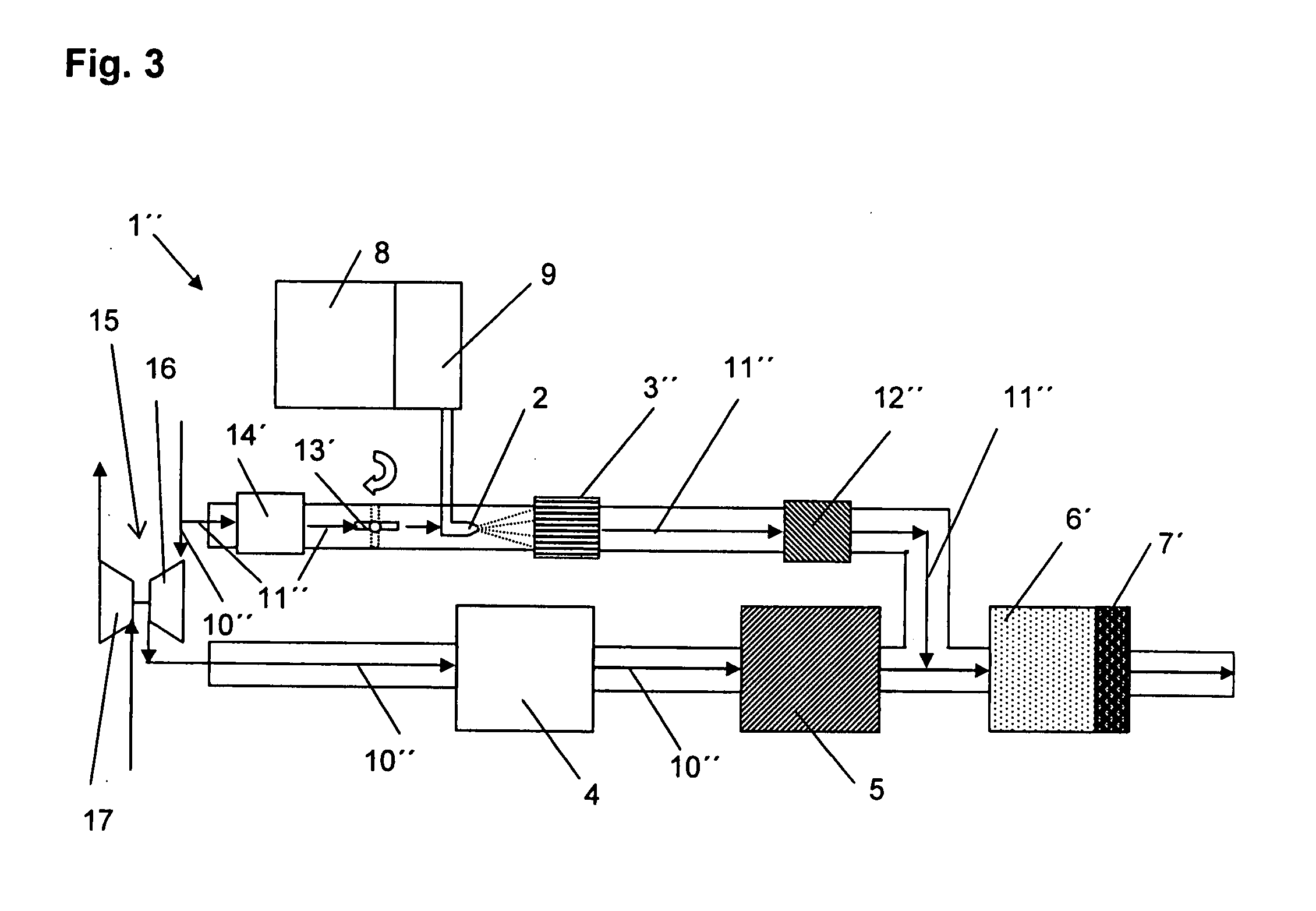Exhaust gas post treatment system
a post-treatment system and exhaust gas technology, applied in the direction of engines, mechanical equipment, machines/engines, etc., can solve the problems of nitrogen oxide reduction, difficult quantitative metering of reduction agents, and use of vsub>2/sub>o/sub>as active material for scr catalysts,
- Summary
- Abstract
- Description
- Claims
- Application Information
AI Technical Summary
Benefits of technology
Problems solved by technology
Method used
Image
Examples
Embodiment Construction
[0035]Referring now to the drawings in detail, an arrangement for the selective catalytic reduction and for the reduction of solid particles in the exhaust gas of an internal combustion engine is schematically illustrated in FIG. 1. The exhaust gases, which are produced from an internal combustion engine (not illustrated) by the combustion processes, and which are symbolized by the arrows in FIGS. 1 to 3, are first guided over an oxidation catalytic converter 4, the purpose of which, pursuant to the reaction previously identified by (2), is to oxidize a portion of the nitric oxide contained in the exhaust gas to nitrogen dioxide by means of the excess oxygen present in the exhaust gas. The thus-produced nitrogen dioxide is used on the one hand during the reduction of the solid particles, and on the other hand with the subsequent SCR reaction, as will be described in greater detail subsequently.
[0036]A partial exhaust gas stream 11 branches off from the exhaust gas stream 10 downstre...
PUM
 Login to View More
Login to View More Abstract
Description
Claims
Application Information
 Login to View More
Login to View More - R&D
- Intellectual Property
- Life Sciences
- Materials
- Tech Scout
- Unparalleled Data Quality
- Higher Quality Content
- 60% Fewer Hallucinations
Browse by: Latest US Patents, China's latest patents, Technical Efficacy Thesaurus, Application Domain, Technology Topic, Popular Technical Reports.
© 2025 PatSnap. All rights reserved.Legal|Privacy policy|Modern Slavery Act Transparency Statement|Sitemap|About US| Contact US: help@patsnap.com



